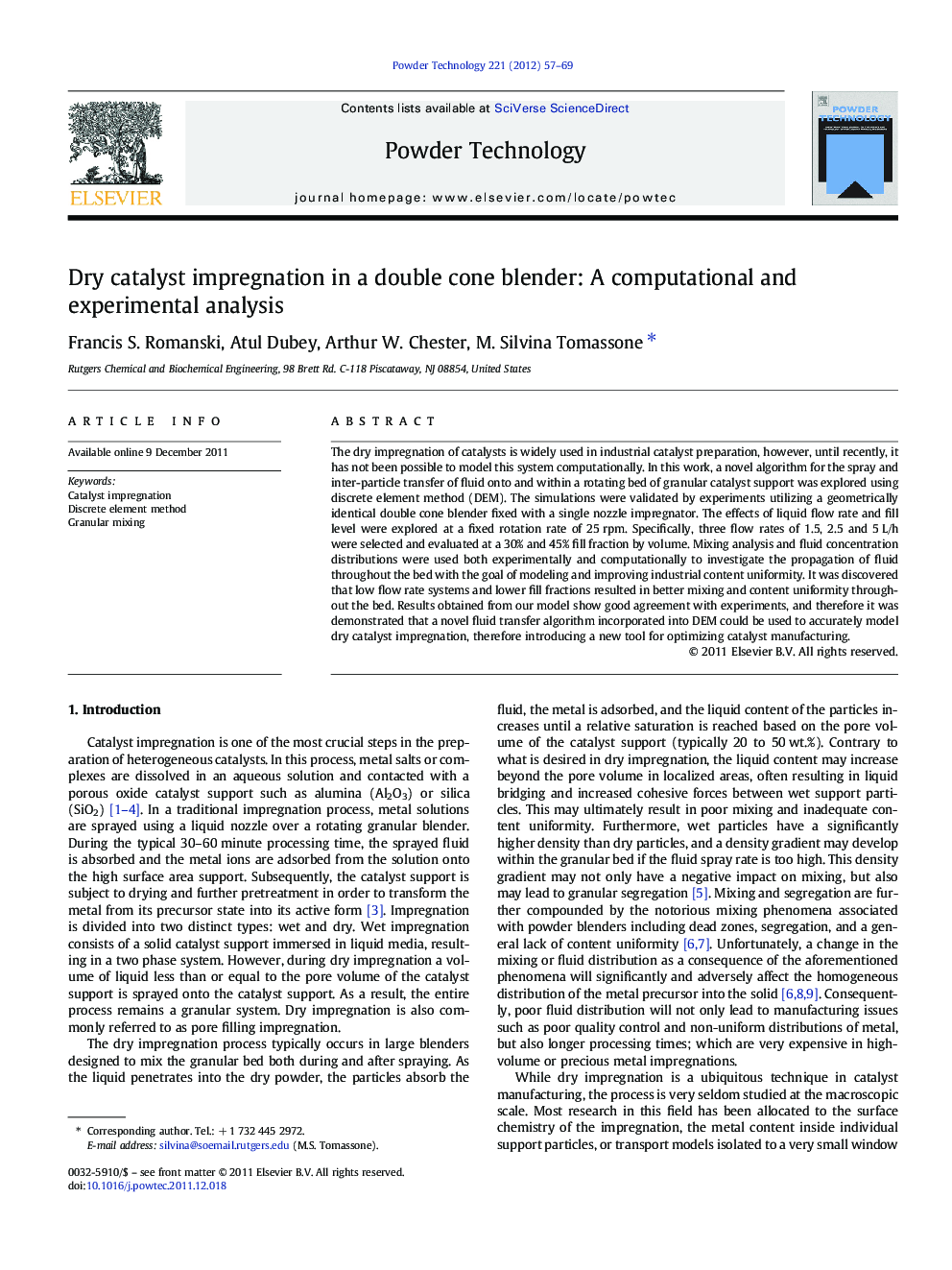| Article ID | Journal | Published Year | Pages | File Type |
|---|---|---|---|---|
| 237212 | Powder Technology | 2012 | 13 Pages |
The dry impregnation of catalysts is widely used in industrial catalyst preparation, however, until recently, it has not been possible to model this system computationally. In this work, a novel algorithm for the spray and inter-particle transfer of fluid onto and within a rotating bed of granular catalyst support was explored using discrete element method (DEM). The simulations were validated by experiments utilizing a geometrically identical double cone blender fixed with a single nozzle impregnator. The effects of liquid flow rate and fill level were explored at a fixed rotation rate of 25 rpm. Specifically, three flow rates of 1.5, 2.5 and 5 L/h were selected and evaluated at a 30% and 45% fill fraction by volume. Mixing analysis and fluid concentration distributions were used both experimentally and computationally to investigate the propagation of fluid throughout the bed with the goal of modeling and improving industrial content uniformity. It was discovered that low flow rate systems and lower fill fractions resulted in better mixing and content uniformity throughout the bed. Results obtained from our model show good agreement with experiments, and therefore it was demonstrated that a novel fluid transfer algorithm incorporated into DEM could be used to accurately model dry catalyst impregnation, therefore introducing a new tool for optimizing catalyst manufacturing.
Graphical abstractA discrete element method simulation and novel fluid transfer algorithm for a dry catalyst impregnation process was developed and validated experimentally to improve efficiency, mixing, and fluid content uniformity during heterogeneous catalyst manufacturing.Figure optionsDownload full-size imageDownload as PowerPoint slideHighlights► A discrete element method (DEM) model was developed for dry catalyst impregnation. ► A novel algorithm for the transfer of fluid to and between particles was developed. ► Low spray-rates and lower fill volumes exhibit better mixing and content uniformity. ► Model accurately predicts fluid transfer within catalyst support during dry impregnation.
